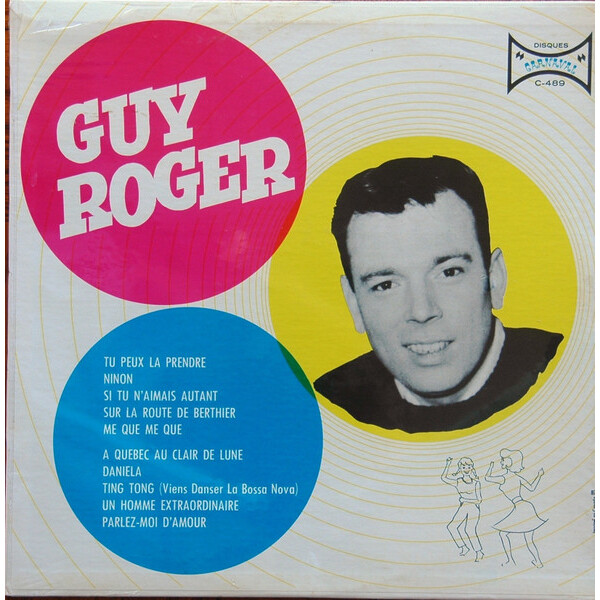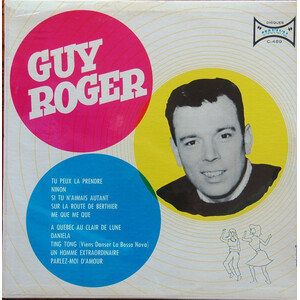Information/Write-up
A defining voice in Quebec’s early 1960s twist and yé-yé boom, Guy Roger rose quickly to prominence with his blend of charm, rhythm, and crowd-pleasing style. Born in Montreal on March 24, 1936, Roger studied at École de La Mennais and began performing in amateur competitions before signing with Apex Records in 1960.
His breakthrough came with the hit single “Tu peux la prendre”, which made him one of the first French-Canadian singers associated with the twist craze. The track appeared on his 1962 debut LP Monsieur Twist (Apex ALF 1541), a vibrant collection of dancefloor-ready adaptations and originals that aligned him with the era’s youthful energy and burgeoning pop scene.
With his slicked-back look, upbeat rhythms, and smooth voice, Roger earned comparisons to contemporaries like Yvan Daniel and André Sylvain. He was a fixture in fashionable Montreal cabarets such as La Page Blanche and Chez Émile, and even briefly hosted radio and television programs, including Vive la vie on CKVL in 1967.
Despite his success, Roger remained wary of being pigeonholed by trends. Though dubbed “Monsieur Yé Yé” by the press, he bristled at the label, emphasizing instead his vocal individuality and ambition to interpret a wide range of material. “The twist passed quickly,” he later said. “I have a voice that people recognize — that doesn’t sound like everyone else’s.”
His 1965 self-titled album Guy Roger (Carnaval C-489) reflected this evolution, moving toward more standard chanson and crooner fare. The transition was met with mixed critical response, with some noting a return to his early sentimental style à la Parlez-moi d’amour.
By the late 1960s, as musical fashions continued to shift, Roger faced the challenge of retaining a young audience. Candid about the music industry's barriers, he noted: “It’s always the same people who get the biggest slice of the pie.” Around 1968, he made the difficult decision to step back from performing, stating simply, “My job is my reason for living, but I know I could never truly quit — even if I tried.”
He turned instead to family life and entrepreneurship. Settling in the Côte-des-Neiges district of Montreal with his wife Barbara and children, Roger became co-owner of Le Viking, a cabaret and discothèque on Boulevard des Laurentides. Though he left the stage, he remained proud of his legacy as one of the few Quebec artists to break through during a time dominated by American acts.
In 2000, his recordings were reissued on CD under the title Swing & Twist (Disques Mérite 22-1161), reintroducing his vibrant performances to a new generation. Tracks like Tu peux la prendre, L’homme qu’elle aimait, and Bye Bye Baby still showcase the playful energy and vocal personality that made him a standout in Quebec’s early pop history.
-Robert Williston


No Comments